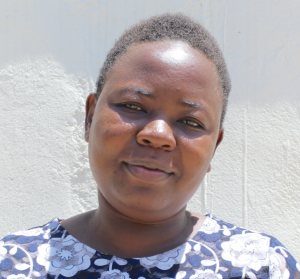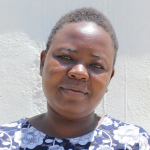Ingwe Primary School was established under church sponsorship in the year 1987 with a population of 50 pupils. The school has grown in infrastructure and enrollment through the help of the county and students' parents. This year there are 720 students enrolled.
The school is located in a rural area where most people farm maize and sugarcane. We were quite curious about why they took the name "Ingwe," which means leopard. The senior teacher explained that before the school was established, the school compound was a forest and the community says that leopards lived in that forest.
But ever since the beginning, Ingwe Primary School has not had an adequate source of water. There are a couple of large plastic tanks that collect rainwater, but these are only 5,000 liters each. Because the water in these tanks often runs out, students must leave school grounds in search of the water they need. They frequent a spring where community members built a discharge pipe that makes it easier to fetch water.
This spring is seasonal and dries up when it doesn't rain. It's also shared with community members, meaning that students often have to wait their turn in line to fetch water.
The trip to the spring itself is not safe for students because they walk along a dirt road where there are many young motorbike drivers. All of these efforts disrupt class and waste away the time meant for studying.
But trouble isn't over once water is delivered back to school grounds: After drinking this water, students suffer from waterborne illnesses like typhoid and are absent from school.
"Our school is average in terms of performance because of outbreaks of waterborne diseases. Absenteeism cases are very high and this has contributed to poor performance in academics," said Teacher Daniel Akoyo.
What we can do:
"Accessing safe water in this school has been a nightmare, as we have been wasting a lot of time to access water. Currently, we have been served with a closure notice by the Public Health to increase the toilets and also ensure a constant supply of water or face closure," said Teacher Gregory Otuba.
"We will be glad if we can get partners to help us."
Training
Training on good hygiene habits will be held for two days. The facilitator will use PHAST (participatory hygiene and sanitation transformation), ABCD (asset-based community development), CTC (child to child), lectures, group discussions, and handouts to teach health topics and ways to promote good practices within the school. The CTC method will prepare students to lead other students into healthy habits, as well as kickstart a CTC club for the school.
Handwashing Stations
We will deliver two handwashing stations to the school, and the club will fill them with water on a daily basis and make sure there is always a cleaning agent such as soap or ash.
VIP Latrines
The current latrines have pits that are almost full.
Two triple-door latrines will be constructed with local materials that the school will help gather. Three doors will serve the girls while the other three serve the boys. And with a new source of water on school grounds, students and staff should have enough to keep these new latrines clean.
Rainwater Catchment Tank
A 50,000-liter rainwater catchment tank will help alleviate the water crisis at this school. The school will also help gather the needed materials such as sand, rocks, and water for mixing cement. Once finished, this tank can begin catching rainfall that will be used by the school’s students and staff.
We and the school strongly believe that with this assistance, standards will significantly improve. These higher standards will translate to better academic performance!

 Rainwater Catchment
Rainwater Catchment
 Rehabilitation Project
Rehabilitation Project



































